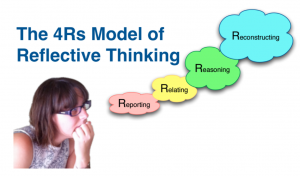Some guidance for the presentations on Friday.
Firstly, we have packed a lot into this messy co-design “design criteria and ideas” phase that is Brief 2. In regards to time things are beginning to move pretty quickly so it is important for project groups to use their time wisely.
Working from the TD workshop today this is my advice in regards to bringing your presentations together:
1. Slow the process down a bit and think through the key objectives of Brief 2, which is mainly to clarify what you think the Lentara wants you to do – what they need help with…
2. Presentation duration – aim for around 10 minutes maximum (ignore my 15 mins in Brief 2) so we can use time for discussion with the client – as the main aim of Friday is to utilise the client interaction to improve your submission for the Sunday night deadline.
3. My advice for the presentation structure.
a. Start with context – remind us of what your project is…what you think the key problem is that you are being asked to address by Lentara. Prepare this by returning to the original project summaries (written by Gemma) in the project group selections document…Then look at the group (1 sentence) statement you wrote prior to the TD workshop. Finally, evaluate what the TD workshop produced for you in regards to clarifying or shifting that problem statement. Once you have the revised statement write it up and open your presentation with it. Be prepared to explain how projecting your problem into the future and then backcasting to now altered and clarified what you think the problem is…In here you may wish to show to the audience the iterative development of your problem statement from Gemma’s summary to what you have now…
b. Once you have the context sorted – then think about using your return brief to guide the rest of the presentation (as part of double-dipping your efforts). Background – presenting in summary your understanding of how your project fits within Lentara. From here move to Objectives, Target Audience, Message, Tone and Competition – if time allows touch on scheduling and budget. Some of these parts may be hard to flesh out so put your energy into the problem, objectives and message.
c. Major tip – we are not looking for creative ideas, solutions here – the focus of the return brief, the assessment, the interaction with the client is on working out what the problem is… what the project is…what the client expectations are…
d. Bring your global mood board research into this presentation where you think it fits (objectives, message…competition…) – but again use it as a secondary aspect to determine with the client the key objectives of your project. For example, case studies of similar projects may be used to argue what you think your project (problem) is…
e. Visual presentation tips – no bullet points (Boring!!) use text sparingly like a few words on one slide to get a point across – speak to that text and elaborate verbally rather than with bullet points; use lots of images (pictures tell a 1000 words as the saying goes..) – research online good presentation techniques – we are going to being presenting a lot in this studio so now is the time to develop that skill – you can see already how important it is to be able to communicate the complexities of what we are working on to others in the studio and beyond… to the client…and then later the people you work with at Lentara…and then beyond Lentara publicaly within the university and potentially to local and global audiences





